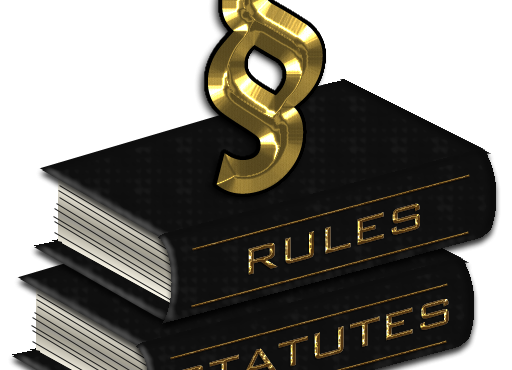International conference on women’s autobiographies
Research group FAAAM, University of Paris Ouest Nanterre
“Our sweetest existence is both relative and collective, and our true self does not reside solely within us,” Jean-Jacques Rousseau wrote in /Rousseau, Judge of Jean-Jacques/. If autobiography is indeed the reflective act of a remembering self, this self is never an isolated subject and the world is never only a mere stage set for reminiscing.
Sociologist Maurice Halbwachs wrote, “we never remember alone.” Are not the interior and the exterior worlds simply two faces of the same reality? Annie Ernaux, who borrowed Rousseau’s phrase in her /Journal du dehors/ Exteriors/, introduces herself as “crossed by people and their existence like a whore,” since her relationship to the world is
not only an objective of her mind, but a physical and erotic link too.
In /How Our Lives Become Stories: Making Selves/ (1999), Paul John Eakin encourages us to demystify the self-referential narrative seen as autodiegetic, where the first person subject would first and foremost refer to itself. Eakin states that the first person of autobiography is truly plural in its origins and subsequent formation.
He proposes the terms “relational self” and “relational life,” arguing that all identity is relational and all self-writing is at the crossroads of biography and autobiography, which positions the narrating subject in a larger context—that of the family, the community and the ethnic group. A writing of inwardness may also be perceived as an inscription of otherness and of ‘formerness.’ To write is not only to become an individual, but also to recognize the presence of others in the making of the self.
Autobiography, which is traditionally associated with a certain subjective idealism, is not expected to fully engage with the world, while memoirs, a genre preferred by Anglo-Saxon women, position the writing subjects in a larger environment. As Nancy Miller insisted, memoirs do not draw a clear line between the public and the private since emphasizing the role of the outside world amounts to some socio-political, cultural or ethical risk. It means inhabiting and reappropriating the public space, becoming visible, sharing one’s experience and offering a reflection on history and society. For Helen M. Buss, memoirs are not only representations of women’s personal lives but also of their desire to repossess important parts of our culture, in which women’s stories have not mattered.
From this perspective, the autobiographical project is akin to sociology or history, which it completes without replacing. We may wonder what historical value to attribute to autobiography. What is the relation between autobiography and cultural memory? Betweenautobiography and counter-memory? Autobiography and photography? Beyond the traditional (written) forms of autobiographical narrative, we are interested in other, more contemporary, forms of autobiographical projects.
Several themes may be explored:
1) The autobiographical narrative as testimony/reappropriation/intervention: how do women participate as witnesses of their time? What narrative strategies do they use to
combine/separate/mix individual and collective discourses, private and public discourses? How do women write narratives of historical events or of “conditions of being”? Specific genres such as war stories or slave narratives could be studied.
2) Autobiography and ‘postmemory’ (Hirsch): when second or third generations recount the trauma (war, exile, decolonization, poverty) endured by previous generations in diasporic memoirs, or working class memoirs (Jeanette Winterson, Carolyn Steedman).
3) The places of memory: what is the relation of women’s autobiography to space-time? How is the place of memory represented (cf the garden world of Jamaica Kincaid in /My Garden (Book))? / What role does it play in the construction of the narrative identity in narratives of exile and of migration/, /such as ethnic culinary memoirs /(Myriam’s Kitchen)/? How are the conditions of being part of several worlds and of the postcolonial self expressed?
4) Autobiography in the world’s web: the Self in the virtual world. Do on-line journals increase our connectedness to the world or do they leave us more isolated?
5) Autobiography and the image of (the self in the) world: the referentiality of images tested against writing (photographs inserted into the autobiographical text as visual transmission / mediation between the self and the world, graphic memoirs, etc…); the intersection between personal, political and photographic autobiographies (Jo Spence)
Papers will be given in English (preferred language) or French
200-400 word abstracts (and short bios) to be sent by June 15th 2016 to the co-organizers: Claire Bazin cbaz1@wanadoo.fr and Corinne Bigot corinne.bigot@wanadoo.fr
Nicoleta Alexoae-Zagni, Istom, CREA Paris Ouest
Valérie Baisnée, Université de Paris Sud, CREA Paris Ouest
Valérie Baudier, CREA, Paris Ouest
Claire Bazin, CREA, Paris Ouest Nanterre
Corinne Bigot, CREA, Paris Ouest Nanterre
Elisabeth Bouzonviller, Université de Saint Etienne
Stéphanie Genty, SLAM, Université d’Evry-Val d’Essonne
Nathalie Saudo-Welby, CORPUS Université de Picardie Jules Verne
BIBLIOGRAPHY
Buss, Helen M. /Repossessing the World: Reading Memoirs by Contemporary Women/. Wilfrid Laurier University Press, 2002.
Eakin, John Paul. /How Our Lives Become Stories: Making Selves./ Cornell University Press, 1999.
/____ Touching the World: Reference in Autobiography/. Princeton University Press, 1992.
Ernaux, Annie, /Exteriors/. Seven Stories Press, 1996.
Halbwachs, Maurice. /La Mémoire collective/. Paris: Albin Michel, 1997.
Hirsch, Marianne and Smith, Valerie (eds). “Feminism and Cultural Memory: An Introduction.” /Signs/, Vol. 28, No. 1, Gender and Cultural Memory Special Issue (Autumn 2002): 1-19.
Hirsch, Marianne, /Family Frames:/ /Photography Narrative and Postmemory, /Harvard UP, 1997.
_____________ “Past Lives: Postmemories in Exile”, /Poetics Today,/ Vol. 17, No. 4 (1996): 659-690.
Miller, Nancy K. /Bequest & Betrayal: Memoirs of a Parent’s Death/. Oxford UP, 1996.
Ricœur, Paul. /La mémoire, l’histoire, l’oubli/. Paris: Seuil, 2000.
Turkle, Sherry. /Alone Together: Why We Expect More from Technology and Less from Each Other/. New York: Basic Books, 2011.
Whitlock Gillian, /Soft Weapons: Autobiography in Transit, /The University of Washington Press, 2007.
Zanon-Davis, Natalie and Randoph Starn, “Introduction,” /Representations/ 26, Special Issue: “Memory and Counter-Memory” (1989): 1-6.
